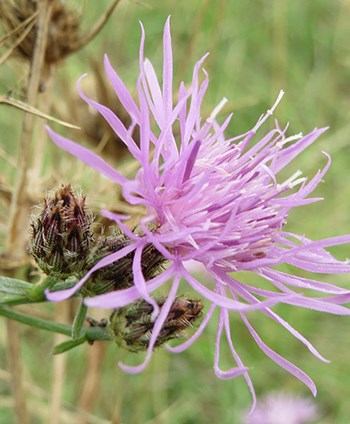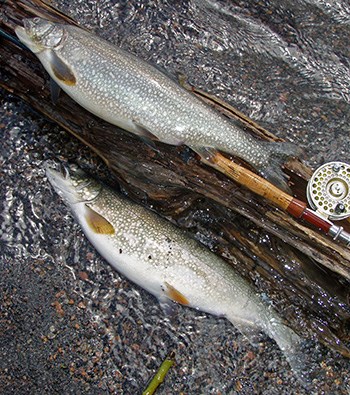|
Native species have taken millions of years to develop complex interactions with other species in shared habitats and exploit a tremendous variety of niches in both terrestrial and aquatic ecosystems. Whenever nonnatives are introduced the consequences are always unpredictable, frequently unexpected, and more often than not detrimental to the natural equilibrium that previously existed. Glacier National Park is no exception to these principles. Use these field guides to help you identify the invasive species that threaten the park. 
Public domain PlantsAt least 127 nonnative species of plants have either invaded or been deliberately introduced into the park. Currently, over 800 sites of nuisance plant infestations impacting more than 2,500 acres have been discovered. Routine monitoring by park biologists regularly reveals new infestations. Eighteen species of exotics plants are of sufficient concern to be targeted for control measures. The North Fork prairies are threatened by leafy spurge and yellow toadflax. Without the natural limitations of their original environment, exotic plants often tend to be highly prolific and develop a monoculture that is difficult or impossible to displace. Leafy spurge, for example, has a deep root system which is difficult to kill with even the most powerful chemicals. Spotted knapweed and ox-eye daisy have invaded disturbed areas throughout the park. Common timothy and other exotic grasses were introduced intentionally for horse grazing and unauthorized grazing of other stock within the park has spread nonnative weeds as well. Control measures have been only partially successful in slowing the spread of these infestations. Biodiversity among native plants is seriously threatened and only a major sustained effort will restore some of these systems. Learn MoreResearchers at The Crown of the Continent Research Learning Center have compiled informative bulletins as well as a field guide for identification of invasive plant species that are established in or encroaching on the Crown of the Continent Ecosystem on the CCRLC media page. Learn how you can be helpful in controlling the spread of invasive weeds through Citizen Science projects. Watch the overview video for more. 
Public domain FishGlacier Park's aquatic systems have been tinkered with for nearly a century, primarily through game fish introductions for recreational angling. This practice was scaled back and ended by the 1970s. Lake trout, native to a few lakes in the Hudson Bay drainage of the park, have been introduced to several west-side lakes. The highly predacious foraging behavior of lake trout has had a catastrophic effect on native fish including the Federally listed bull trout. Further complicating the situation, introduced brook trout can hybridize with bull trout and produce sterile offspring. Introduced kokanee salmon and Lake Superior whitefish compete for food with native westslope cutthroat trout. Introduced rainbow trout also hybridize with the native cutthroat trout and corrupt their gene pool. Full restoration of the native fishery in Glacier is impossible at this stage, but limited rehabilitation of native fish populations in some waters may be feasible. Partial recovery of native fisheries in the park will come about only through further study, increased funding and aggressive management in cooperation with neighboring agencies. Studies concerning these threats are underway, including research on native population distributions and the feasibility of the removal of invasives from certain bodies of water. Glacier's fishing regulations reflect the complexities of the native vs nonnative situation, and strive to encourage native species population conservation. For example, there is no limit on lake trout in park waters west of the Continental Divide. Check the fishing page for more specific information. |
Last updated: December 5, 2019
